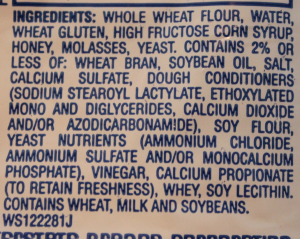The recent Bobby Stuckey polemic has got me thinking. Far more often than not, “natural” wine is critiqued on A) its flaws, and B) if its “story” is overshadowing the quality of the wine itself. Let’s break these 2 things down a bit…
Flawed vs. Sound
A flaw is pretty easy to grasp. If your wine tastes like vinegar, it is flawed — easy enough. The modern wine world is very accepting of cultured yeasts, mega-purple, and oak extracts — so, because modern wine-making textbooks train today’s wine-makers on the use of such techniques, we can say wines like Barefoot, Yellow Tail, and Cupcake are SOUND.
The Story Behind a Wine
Let’s get one thing straight — no matter how great the “story” behind a wine, we still have to enjoy drinking it! Here is where things get a tad confusing — as what, exactly, is a STORY of an agricultural/food product. Let’s invent a couple examples:
1) we have a skin-contact, orange wine, made from biodynamically farmed Aidani grapes, fermented spontaneously and aged in a qvevri, by a blind shaman in Minnesota. Only 50 cases exist. Great story! The taste: nail-polish remover and mousiness. “FLAWED.” UNSOUND.
2) A bottle of Barefoot Chardonnay. Grapes sourced from all over the place. No clear idea of how the wine is made or what exactly is in it. Tastes generic and consistently the same year after year. 8,331,238 cases produced. “UNFLAWED.” SOUND(?) (p.s. I hope to post later on some musings regarding the notion of being “sound” — and what, exactly, does it mean for a wine to be “sound”)
I find it funny, that while the story of wine #1 is so detailed, wine #2 really has no story. We COULD have a little more of a story if, by chance, a listing of ingredients were included on the label. But, alas, the wine industry falls outside regulations to which the rest of the food industry must adhere. In a strange way, the SOUND(?) wine — #2 — is better off WITHOUT a story. Sometimes it may be helpful , in this industry, to NOT TELL THE STORY!
It is interesting how wine falls outside the food realm, actually. Ask the general public if a loaf of Wonderbread is better then a baguette from the corner bakery. By far most people know Wonderbread is mass-produc ed crap — right-off the bat all you need to do is look at the list of ingredients. But wine doesn’t suffer the same scrutiny. Selling wine at a retail shop I see this everyday. I help customers who have just shopped for local, organic groceries, but who have no scrutiny when it comes to choosing a wine. Most would be horrified if they knew they were drinking “Wonderwine!”
ed crap — right-off the bat all you need to do is look at the list of ingredients. But wine doesn’t suffer the same scrutiny. Selling wine at a retail shop I see this everyday. I help customers who have just shopped for local, organic groceries, but who have no scrutiny when it comes to choosing a wine. Most would be horrified if they knew they were drinking “Wonderwine!”
The “story” of any food product begins in the farm — and that story continues to your glass or plate. I don’t want to turn my back on “stories” — in fact, I want a clear story every time I drink and eat!
I understand what Mr. Stuckey is saying. The criticism, though, should not be with “natural” wine — and the notion of being SOUND needs to go. The real test lies in a wine’s authenticity. When does a wine loose authenticity? There is a point when case production tips the scale from artisan to mass-produced — but when does that occur exactly? When has a wine had so many people involved in its production that authenticity is gone? This is for another posting… for now, start looking for the story in everything you consume, and realize that the lack of a story is more insidious than an overly detailed, colorful one.

Are you still a wine distributor? I’m trying to locate a wine by Milan Nestarec, Danger 380 Volts. Can you assist me with this? I live in Corrales, so I’m local. Thank you